#with wisdom and experience you can build a player character whose build is mechanically advantageous AND who fits inside a backpack
Explore tagged Tumblr posts
Text
Top Ten: Non-Nintendo Nintendo Games
These days, when one thinks “Nintendo Game”, they’re likely thinking of a game developed by Nintendo. But back in the day, a “Nintendo Game” meant literally anything on a Nintendo system. And there was quite a bit to offer in that respect, too. See, before Nintendo’s near-monopoly-level dominance of the market began to break down thus forming a powerful rift between Nintendo and other third-party developers which has yet to fully heal to this day, there was basically no other place to turn BUT Nintendo if you really wanted to get your game out there. As a result, the legacy of Nintendo’s older systems, and even some of its newer ones, is defined just as much by games developed by other studios as it is by the games Nintendo itself created. I thus decided, thanks to some inspiration from the_moviebob and the recent revival of his “Game OverThinker” series in the form of Top 10 countdowns, to look at those games across all of Nintendo’s history, and pick my personal ten favorites of the bunch for you to see!
For the record, “non-Nintendo Nintendo game” here means two things:
1.) The game cannot be developed by Nintendo, nor use any Nintendo-owned characters.
2.) At the time of the game’s original release, it had to be exclusive to a Nintendo system; games that retroactively received multi-platform releases still qualify.
With that out of the way, here’s my personal picks for the Ten Best Non-Nintendo Nintendo games:
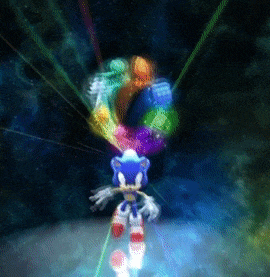
10.) Sonic Colors (SEGA, Nintendo Wii, 2010): Man, remember that brief, magical time from 2008 to 2012 where it looked like SEGA might actually be getting the "Sonic" series back on track? Well, "Sonic Colors", to my mind at least, is one of the very best games to emerge from that all-too-brief cycle, taking the day-time segments from the previous year's "Sonic Unleashed" and expanding on them beautifully. The new ways to traverse and explore the game's impressively-constructed stages added a nice amount of depth, collectible red rings lent the game a decent amount of replay value, and even the multiplayer mode managed to provide some amusing little distractions, as well as being cleverly integrated into the single-player campaign by playing a role in unlocking one of the game's big secrets. Heck, it even featured the debut of a new, significantly less annoying vocal cast for the "Sonic" characters. Sure, like a lot of Sonic games, it can be fairly rough around the edges, but isn't there something nicely poetic about one of the best things Sonic's done in the last decade being exclusive to a Nintendo console?

9.) Eternal Darkness: Sanity's Requiem (Silicon Knights, Nintendo Gamecube, 2002): These days developer Silicon Knights feels a bit like the sad punchline to a bad joke after the one-two punch of the disappointing "Too Human" and the atrocious "X-Men: Destiny". For a while there, though, their reputation was iron-clad, thanks in no small part to "Eternal Darkness", one of the most compelling games, not just for the Nintendo Gamecube, but indeed the entire console generation it was part of. Mixing Lovecraftian horror with wide-spanning time travel, it's one of the few games to evoke a true sense of existential dread, with the very concept of sanity itself being built into the game's mechanics. This forces you to witness the strain these incredible events really put on the player character's mind, and thus do your level best to wrestle against that ever present tide, only to find out how very difficult that fight is. Combined with branching paths to keep you coming back and compelling horror imagery that remains exceptionally potent all these years later (indeed, some of the game's cruder graphics almost enhance the effect), it makes for a truly haunting requiem.
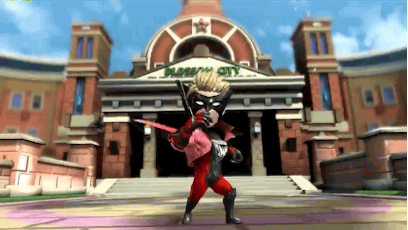
8.) The Wonderful 101 (Platinum Games, Nintendo Wii U, 2013): Even fewer games emerged to try to truly take advantage of the Wii U's unique game pad controller than did those which tried to really engage with the Wii's motion controls, but thankfully one of the ones which did was "The Wonderful 101", Hideki Kamiya's exuberant love letter to the Tokusatsu genre. Basically an Action Game take on the "Pikmin" series, "101" puts you in control of a massive travelling army of superheroes who can unite into various giant constructs to fight evil, with the Game Pad's touch screen providing a quick, easy way to draw up the relevant formations, as well as amusing mini-game segments that use the game pad to show you the inside of a building while needing you to observe the effects it has on the outside up on the TV screen. The design continuously finds clever ways to challenge the player, and like all Platinum game, it also has an airtight combat system that leans heavily on timing and reaction in the most viscerally satisfying way possible. All that, and it wears its visual identity proudly up front at all times, an aesthetic that is simultaneously wonderfully unique, even as it is also steeped in obvious, affectionate homage.
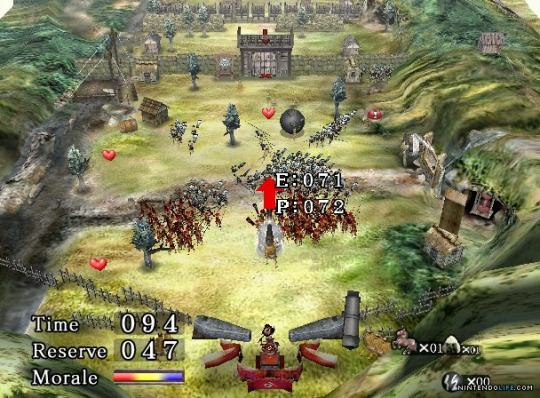
7.) Odama (Vivarium, Nintendo Gamecube, 2006): Here's a game few people have even heard of, let alone played. This is because, like most games which fit that description, it's a truly bizarre cross-pollination of genres. How bizarre? It's a Feudal Japanese War Epic...played through via pinball mechanics. If such a combination sounds impossible, all you need to do is give this truly one-of-a-kind experience a go, because once you do it'll make you wonder why more people haven't tried it. Giving the player a bird's-eye-view of various battlefields, you are charged with using your pinball flippers to try and guide the "Ninten Ball" (a massive, wrecking-ball-like pinball stand-in) to hit specific targets, flatten enemies, and try to clear a path to allow your troops to overtake the enemy's territory. Admittedly, the fact that this is a game of pinball, and thus often subject to as much luck as skill, can make even the early levels tricky to actually get through some times, and it does take a bit of time before the game's full, mythological tone takes hold. But even so, "Odama" makes its eclectic mixture work, and work remarkably well, pulling you in and keeping you going all the way, revealing new and ever-deepening layers to its game play without ever changing its fundamentals. If you can find a copy, you owe it to yourself to give it a try.

6.) Goldeneye 007 (Rare, Nintendo 64, 1997): Everyone knows the old conventional wisdom: licensed games suck, and movie games suck even harder. Yet the Nintendo 64 adaptation of the James Bond film "Goldeneye" doesn't just Not Suck, it's a stone-cold classic whose shadow still looms large over the entirety of the FPS genre. These days, of course, that's primarily attributable to its exceptional multiplayer mode, which even by modern standards shows an absolutely dizzying degree of customization to fit just about any group's preferred style of play. Want to keep certain stages off the rotation? Want to play with only a certain kind of gun? Want to change up how to win a particular kind of match? "Goldeneye" lets you. But the single-player shouldn't be taken for granted either, taking some of the movie's best moments and translating them perfectly into playable form. All that, and it's filled to the brim with brilliant deep-dive references for long-time Bond fans. No doubt about it, no one does it better than "Goldeneye 007".
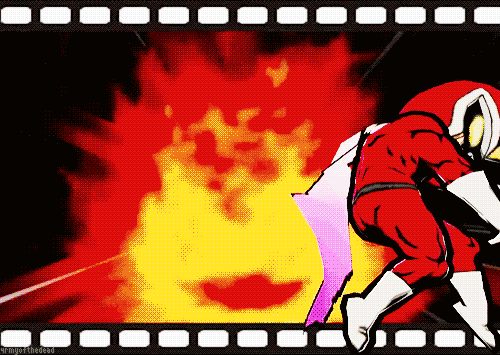

5.) Viewtiful Joe/Resident Evil 4 (Capcom, Nintendo Gamecube, 2003/2005) : The entire premise of this list rests upon Nintendo's relationship with third-party developers, and nothing is more emblematic of how poor said relationship has grown in the last two decades than the notorious "Capcom Five", a highly-promoted batch of five games from developer and long-time Nintendo collaborators Capcom, meant to be exclusive to the then-struggling Nintendo Gamecube...one of which was cancelled outright ("Dead Phoenix"), ��two of which were Gamecube exclusives that sold poorly ("P.N.03" and "Killer 7"), and then there were "Viewtiful Joe" and "Resident Evil 4", both of which proved popular enough to warrant Playstation 2 ports within a couple years of their respective releases. But even setting that contentious history aside, these two are indeed both fantastic games, one the stirring debut of a great new franchise from future "Wonderful 101" creator Hideki Kamiya (and steeped even further in his love of Tokusatsu, if you can believe it), the other quite handily the best of its notorious franchise, amping up its action elements while still delivering the shock and gore. Neither one could save the Gamecube from its premature demise, but both demonstrate a remarkable level of polish, innovation, and engagement. From "Joe"'s endearing sense of humor and fantastic fighting mechanics capturing the unique charm of the Super Sentai Hero, to "RE7"'s over-the-shoulder camera allowing the game to come at you full-throttle exactly when it counts most, they both prove themselves essentials for any Gamecube library, and a fitting last hurrah for that faded period of time when Nintendo and Capcom basically went hand in hand.
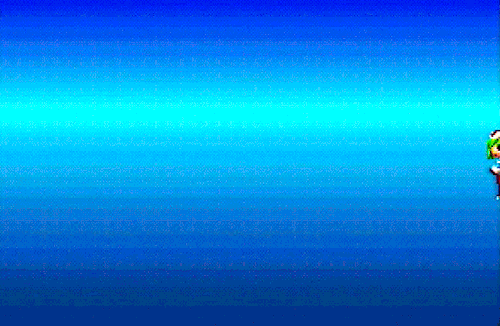
4.) Mischief Makers (Treasure, Nintendo 64, 1997): The release of "Super Mario 64" in 1996 revolutionized the world of video games in general, and the platformer genre in particular. Suddenly, everyone, from long-time favorites like Donkey Kong to lowly also-rans like Bubsy were pumping out 3D platformers in "64"'s image, and the genre's 2D roots seemed destined for extinction. It would take a lot of guts to put out a "traditional" 2D platformer in that environment, but sure enough, "Mischief Makers" had guts to spare, providing not only a refreshing alternative to the 3D glut but doing so with one of the most unique, best-constructed entries in the entire genre. See, rather than the usual hop-and-bop strategy, platforming in "Mischief Makers" instead centers on using special dash boosts to make your way to where you need to be, and shake-shake-shaking every last item you can get your hands on. It's not only a compellingly visceral new layer to things, but one the game explores thoroughly and creatively across its vast, well-varied selection of levels. Shake an object to transform it, or make it drop an important item, or get it to move in the direction you want; the game finds every angle it can, and each one succeeds. The Boss Battles are some of the most satisfying and challenging I've ever played, too. Even its story, loaded with sharp-witted humor and fantastically memorable characters, adds an extra layer of flavor to the whole experience. "Mischief Makers" was sadly underappreciated in its day, and hard to find nowadays, but even so, it's an absolutely great game.
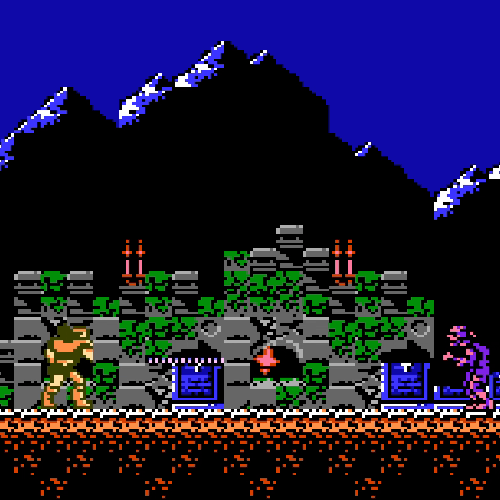
3.) Castlevania (Konami, Nintendo Entertainment System, 1986): Did you see that awesome trailer for the new "Castlevania" series coming to Netflix? Not only does it make the show look like it is going to be seriously great, it also serves as a stark reminder that, while it may have found renewed success and vitality as a Playstation game thanks to the iconic "Symphony of the Night", "Castlevania" began as, and is primarily associated with being, an NES game. And what an NES game it was, too. Throwing basically every last Horror Monster you could think of-Dracula naturally, but also the Frankenstein Monster, Medusa, and no less than the Grim goddammed Reaper-together into one place, mixed well with a unique take on the Gothic Horror aesthetic, and brought to life with some of the best graphics on the system, as well as some of its very best music, the original "Castlevania" offered up a compelling, challenging experience. Some of that challenge can be more than a bit cheap at times, it's true; like "Ninja Gaiden" (a game which just barely missed this list, for the record), the occasional clunkiness of the controls can lead to deaths that feel unfair. But for the most part, difficulty in "Castlevania" is earned by way of enemies equipped with tricky patterns, platforming designed to lead you right into the thick of danger, and managing your resources as best you can to insure they achieve the best effect. There's a lot of depth to the action here, with the wide variety of sub-weapons available to you and the situations you'll encounter. It all adds up into one of the best, most bizarre, most fascinating games to grace a Nintendo system.
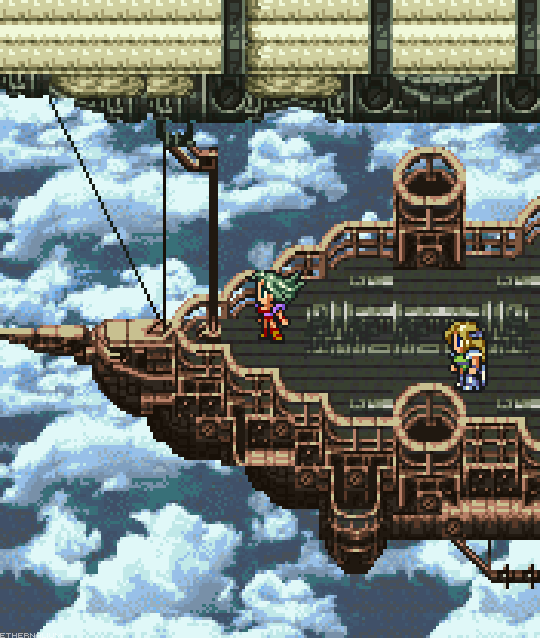
2.) Final Fantasy VI (Square, Super Nintendo, 1994): Like "Castlevania", "Final Fantasy" is a series that, once upon a time, was primarily associated with Nintendo. But much like their relationship with Capcom, the Nintendo/Square (at-the-time-enix-less) partnership fell apart after the end of the Super NES, and "Final Fantasy" would go on to be much more a Playstation franchise from that point on. The good news, then, is that the last "Final Fantasy" game to come of that partnership is also one of the very best games in the entire franchise. It features one of "Final Fantasy"'s most memorable villains in the form of the genocidal mad-clown Kefka Palazzo. It features one of the series' most memorable, at-once-humorous-but-also-heartwarming sequences in the form of the notorious Opera performance. And it features one of the franchise's most ambitious narratives, one that takes you to the very literal End of the World and back again. Meanwhile, the aesthetic, the last time series mainstay Yoshitaka Amano would act as the primary character designer for the franchise, is gorgeously realized, pushing the Sci-Fi/Fantasy angle the series had been refining over the last several years to all-new places, and its soundtrack, composed by another FF veteran, Nobuo Uematsu, is justifiably legendary among fans. Most of all, though, it's just a gripping RPG from start to finish, taking all the things that had made prior "Final Fantasy" games work and polishing them to an absolute mirror shine. The combat, the travel, the customization options for your characters..."VI" marked the end of an era. But what an ending it turned out to be.

1.) Mega Man 2 (Capcom, Nintendo Entertainment System, 1988): It would seem nearly impossible to believe today, given the relative disarray into which Capcom has allowed him to fall, but once upon a time, Mega Man was one of the true stars of the video game world. And if you ever need to remind yourself of why, all you need to do is play "Mega Man 2" for the NES. It is here that the "Mega Man" series as we know it today truly begins, taking the rougher look, feel, and build of its predecessor and granting it a greater degree of polish, depth, and outright fun. The new Slide mechanic, for example, changes up the pace of the game's platforming considerably, while the more nuanced take on the previous game's rock-paper-scissors system for the various new weapons Mega Man can acquire provides the game with many of its most memorable moments (you ever try to use Metal Man's own weapon against him? You should!). The stages are all significantly better designed, too, with sharp, challenging traps mixing with pin-point precise run-and-jump segments, as well as some great new enemies to blast along the way. The music and graphics are aces too, finally fully realizing the Anime Sci-Fi Kid's Book aesthetic the series is now so well known for, and creating some of the most memorable music ever heard on the system (Dr. Wily's Castle is still an all-time great track). It even introduced Mega Man's iconic sidekick Rush the robo-dog, giving the character himself that much greater a sense of being a complete character by virtue of having a partner and friend to (literally) bounce off of. "Mega Man II" is one of Capcom's very best games ever, and it's the single best non-Nintendo game to hit a Nintendo console.
7 notes
·
View notes